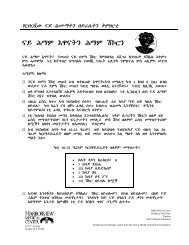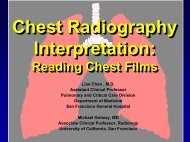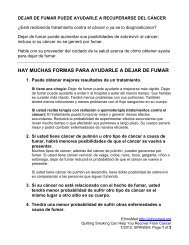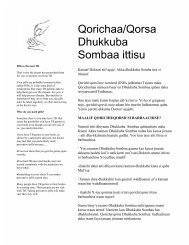Somali Knowledge Attitude Practices Study (KAPS) - EthnoMed
Somali Knowledge Attitude Practices Study (KAPS) - EthnoMed
Somali Knowledge Attitude Practices Study (KAPS) - EthnoMed
You also want an ePaper? Increase the reach of your titles
YUMPU automatically turns print PDFs into web optimized ePapers that Google loves.
CHAPTER 4: NORTH WEST ZONE<br />
4.1 Situational Analysis<br />
4.1.1 Socio-Political Situation<br />
The North West Zone (NWZ), also known as <strong>Somali</strong>land, declared itself independent in May<br />
1991 and whose borders follow those of the former British <strong>Somali</strong>land Protectorate. However, the<br />
declaration of independence is not recognised in other parts of <strong>Somali</strong>a or internationally. The<br />
NWZ has nonetheless managed to avoid the protracted conflict and violence that has afflicted<br />
much of southern <strong>Somali</strong>a (UNDP, 2001).<br />
NWZ as shown in the Map 3, is made up of<br />
Awdal, Galbeed and Togdheer regions while<br />
placement of Sool and Sanag is<br />
characterised by sporadic disputes between<br />
NWZ and NEZ. NWZ is bordered by<br />
Djibouti in the Northwest tip, Gulf of Aden<br />
in the north, NEZ in the east and Ethiopia in<br />
the south. Hargeisa, the capital of NWZ is<br />
the largest urban setting.<br />
Map 2: North West Zone<br />
Due to general stability, peace and better socioeconomic prospects, the town has, since the early<br />
1990s, hosted large number of IDPs and returnees from south and central <strong>Somali</strong>a and Ethiopia.<br />
Currently, Hargeisa has a total of seven IDP settlements with an estimated population of 83,200<br />
persons. The IDP population is highly susceptible to socioeconomic, health and nutritional risks<br />
due to their lack of stable livelihood.<br />
4.1.2 Nutrition and Health Situation of Children in NWZ<br />
In North West Zone, the U5MR is below one death/10,000 U5s/day (FSAU, 2007). Past<br />
assessments have identified poor health, sanitation, shelter conditions, food insecurity and high<br />
malnutrition levels, as the major problems that affect IDP and returnees. Nutrition assessments<br />
done in Hargeisa show that the prevalence of acute malnutrition dropped from 27% in 2001 to 9%<br />
in 2006. Severe levels of acute malnutrition also dropped between 2001 (3.3%) and 2006 (1.1%).<br />
The most prevalent illnesses are diarrhoea and acute respiratory tract infections.<br />
47






